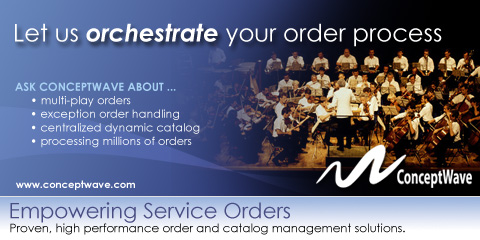
article page |
1 |
2 |
3
dimensions, including service type, access technology and even region, and make that information available throughout the organization, from customer service reps to marketing groups to retail employees to technical support departments.
The CSP must similarly be able to correlate information about how the actual product is created and delivered, on an end-to-end basis. Typically a product such as a calling plan must be assembled from a number of service components (e.g. call waiting, call forwarding, packages of minutes), and sold to the market through offers (e.g. family plan, business plan, prepaid plan). The product must then be activated on the network, which requires interfaces to dozens of systems, including billing and CRM, as well as the network itself.
|
|
Without a unified view of the subscriber the CSP has no way of treating that customer in a consistent manner. |
|

Resolving the Data Dilemma
Centralizing this product information may be the most effective way to counter any inconsistencies, but this approach is not always practical or efficient from a cost and resource perspective. A more reasonable alternative is providing a common interface to multiple back end systems, and then implementing a front-end system that provides unified access to all the information associated with an order, either via a federated approach or a slave/master configuration. The CSP can then bridge its
|
|
|
|
|

ConceptWave terms this end-to-end process control “Unified Sales Management,” referring to an approach that manages the entire sales process—from pre-sale brand management and offer management through to order fulfillment—across multiple channels. The primary challenge to a Unified Sales Management approach is that each of the back end systems involved in the sales and order fulfillment process contains a representation of the product, which can cause disruptions if those representations are out of sync. Add the fact that the CSP’s various sales channels may not receive consistent product and customer information, and the risk of a disjointed, inconsistent customer experience becomes a reality.
|
|

back end systems and gain a consolidated view of the product data across the various back end applications.
One successful example of this approach is a project that ConceptWave is doing with a large North American cable operator. This operator had multiple back end systems that were built for different channels, each of which supported a separate product set. This meant that a customer who purchased through more than one channel had multiple profiles within the various systems, making it difficult for the operator to obtain a single, comprehensive view of the customer, including all products owned and current status.
|
|





